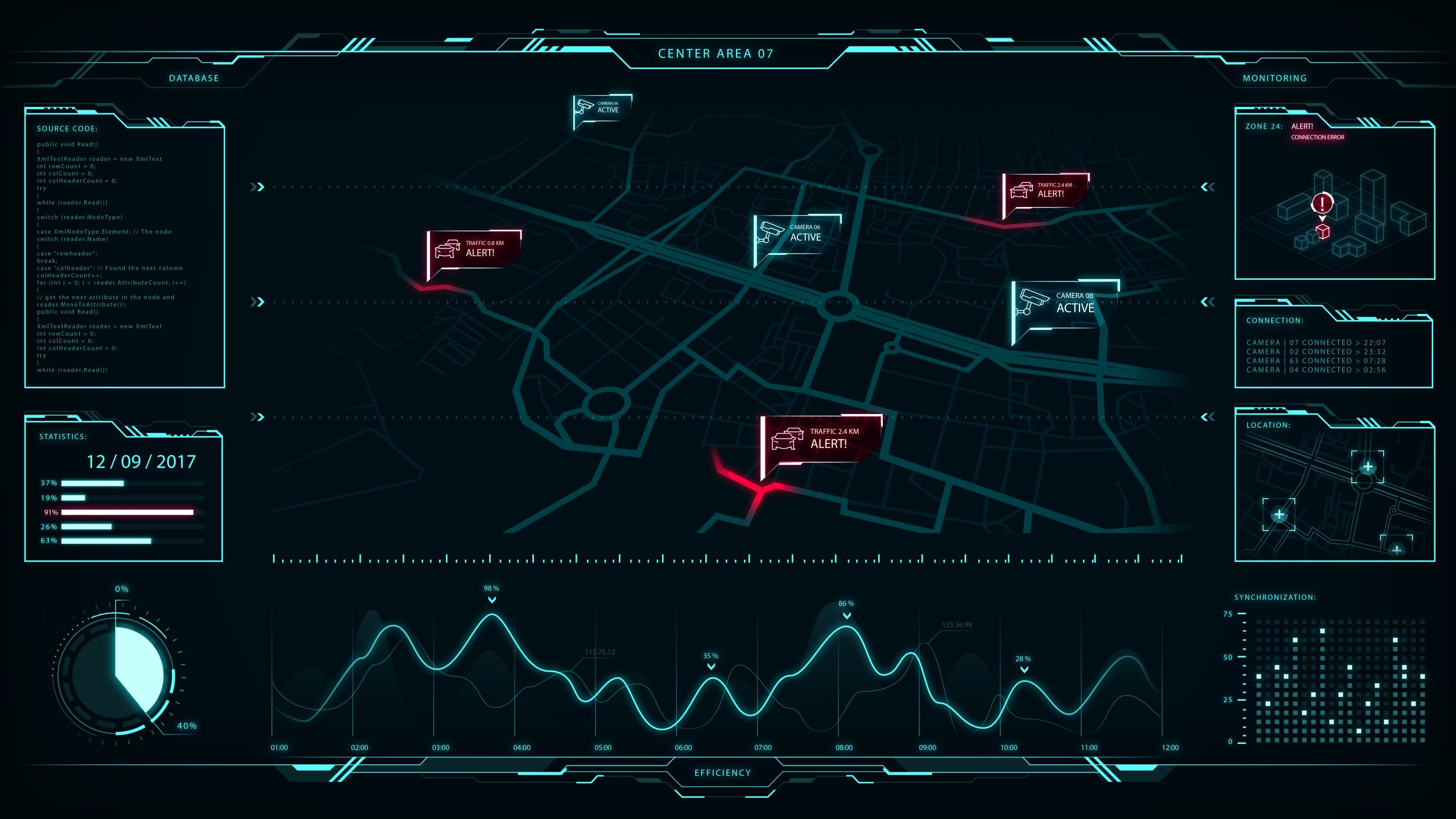In Times of Crisis Governments, Cities, and Businesses Must React with Agility
After a crisis one thing is unanimously said, “we should have acted faster”. Whether it be a natural disaster, financial crisis, or global pandemic, being able to react with agility saves lives.
Coronavirus is a Wake-Up Call
As of the writing of this article, the world is in the middle of its fight against COVID-19 (Coronavirus) and it’s beginning to show how unprepared we are for a black swan event like this. But how can you prepare for something if you don’t know when it’s coming or what it will be? Even if we knew a global pandemic was on the horizon, to fully prepare we would have to know the DNA makeup of it in advance and have a cure already developed. Of course, this is illogical for a brand-new virus like Coronavirus. Applications are in the works now to combat the disease, but had real-time systems been in place many lives could have been saved.

Agile Applications are a Necessity
It is impossible to prepare for every kind of crisis that can occur, but you can ensure you are ready to act and make changes on the fly by developing mission-critical applications (city traffic systems, financial systems, emergency response protocols, etc.) in an environment that allows for rapid change. We live in a world where so little can be predicted, it is paramount to be ready to act and react in real time when a crisis occurs and human life is on the line.
Understand What’s Happening as it Happens
In order to build the most effective mission-critical applications you must first be able to ingest real-time streaming data from the environment. This involves many different sensors, cameras, IoT devices, edge nodes, and more, all working together in unison to provide the foundation for your application. Ideally, these sensors and IoT nodes would be put in place before a crisis occurs.
In the past, organizations have done just this: set up all the sensors, built a fancy dashboard to view the data coming in, dumped all the incoming data in a database, and called it a job well done. This is great, but when a crisis occurs you are tasked with sifting through stored data points and watching your dashboard in horror as pandemonium unfolds around you. Being prepared for a disaster situation requires taking the data streaming in and then taking the next step of building your mission-critical application on top of that data.
Build Mission-Critical Applications Quickly
We don’t know when the next crisis will happen or what it will be; but we must have the ability to rapidly develop the necessary systems in order to preserve human life. This is where low-code application development makes all the difference. By abstracting away vast amounts of code, taking a low-code approach drastically cuts both development time and cost. Instead of twenty developers taking two years it may now only take two developers two months.
Complementary to low-code is event-driven architecture (EDA). This involves organizing your business/problem scenario as a series of events that your system then responds to, bringing humans in when necessary. More on EDA below.
The combination of an EDA approach and low-code development provides the perfect sandbox for businesses, cities, and governments to quickly build or adapt applications in response to an unforeseen crisis.
Evolve Applications on the Fly
One of the main benefits of using an event-driven architecture is being able to adapt and transform your application to fit current needs. An event-driven application is decoupled by nature; meaning the various parts of it are built and are editable separately from each other, with great speed.
A great example of this is an event-driven smart traffic system which controls the traffic lights, parking meters, and bridge tolls for a smart city. This system consists of three applications, with the objective of keeping traffic flowing smoothly and changing the price of tolls/parking based on fluctuations in demand. Developing each of these applications separately and sharing relevant data when necessary makes it much easier to deploy new rules and updates to existing systems with minimal to no downtime.
So, what potentially happens in our smart city example above in the midst of a crisis such as a global pandemic? The smart parking meter application can quickly be updated to close off parking structures designated for popup testing facilities. Traffic light systems can be optimized for flow towards hospitals or reroute people away from quarantined zones. Bridge tolls can be temporarily waived to aid people in getting testing and to safety. These are just a few of many potential ways these applications could quickly be adapted to help save and improve lives.
Expanding our example out beyond traffic to all systems that a city has (utilities, airports, public transit, hospitals, etc.) it is easy to see the opportunity to integrate and share functionality between previously siloed systems is massive.

New Business Opportunities
Through all the negatives brought about by the Coronavirus there are positive side-effects in new business opportunities it may bring to light. We are already seeing the proliferation of video conferencing technologies as people work-from-home amidst the pandemic. Below are a few places where agile application development could improve both operational effectiveness and public safety:
Retail Automation
Cashierless retail and grocery stores are already in the works by many companies (such as Amazon or Cust2Mate) and have even started popping up in select locations. During a global pandemic or other crisis, it may make sense to limit the number of grocery store employees and the amount of people directly interacting in the store; potentially exposing themselves and their families.
Automated check-outs that we see at most large retailers are a step in the right direction, but still require employees on-hand to prevent theft and assist with system glitches. In order to minimize exposure technologies such as RFID tags (Radio-frequency identification) could be implemented to automatically recognize items in your cart and charge your mobile wallet as you leave. Of course, some employees are necessary to monitor and intervene if needed. This can be done from an on or off premise Operational Control Center (more on this below) where employees are safe and secure.
Stopping Disease Spread
When an outbreak occurs, a fast and agile response is imperative to minimize new cases and quarantine those who have been exposed. A highly trafficked and extremely geographically diverse place like an airport is a breeding ground for a pandemic to spread (as we have seen with COVID-19).
Using already in-place cameras, travel logs, and other airport sensors, an interaction-tracking application could be quickly developed and deployed to help contain an outbreak. When airport screening facilities find a new case, images of the person are fed into artificial intelligence and object recognition programs to find who this person interacted with. These potential virus exposures can then be identified via already on file passport/ID information, tested themselves, and quarantined if necessary.
Of course, machines and algorithms won’t do this alone; humans must monitor the situation and make critical decisions when necessary. Operational Control Centers (similar to a NASA or SpaceX mission control room) will house human operators whose job is to collaborate with computer systems and take quick action when seconds count.
Remote Operations
A huge new industry is on the horizon and companies who are first-to-market will see a massive competitive advantage. Just as cities and governments currently rely on the private sector for utilities (electric, water, internet, etc.), the day to day monitoring and response of all these new smart systems will be managed by Operations Control Centers (OCCs). These OCCs may serve many different clients or focus on one large contract.
Previously, the term Operational Control Center was used in the aviation industry to talk about air traffic control and other aircraft monitoring centers. In order to do business and react to disasters at the speed necessary (real time) for today’s world, the concept of the Operational Control Center must be expanded to all industries.
In light of current events and people being told to stay at home amid the Coronavirus pandemic, companies are struggling to keep operations running while adhering to social distancing. A big benefit to building your application on a distributed cloud platform, like VANTIQ, is systems can be accessed from anywhere with an internet connection. If it gets to the point when Operational Control Centers must shut down, employees can be almost as productive remotely.
VANTIQ Enables Operational Agility
All the sensors in the world won’t help if you have no way to take real-time action on the plethora of data streaming in. By developing your application on a real-time event-driven platform like VANTIQ, you enable humans and machines to effectively collaborate and quickly respond to any situation.
Learn more about how Real-Time Event-Driven Architecture is changing the way the world operates by downloading our free whitepaper, Understanding the Modern Event-Driven Architecture (EDA) Landscape for Digital Transformation.
Have a thought for an interesting blog on the topics of real-time business, digital transformation, event-driven applications, human-machine collaboration, edge computing, Internet of Things (IoT), or high-productivity/low-code development? If so, send me a note: [email protected].


